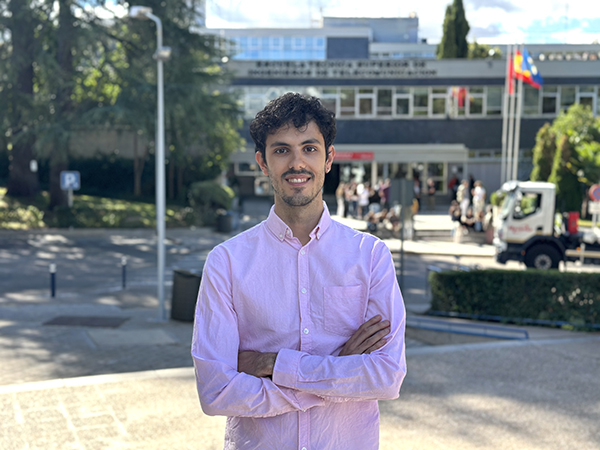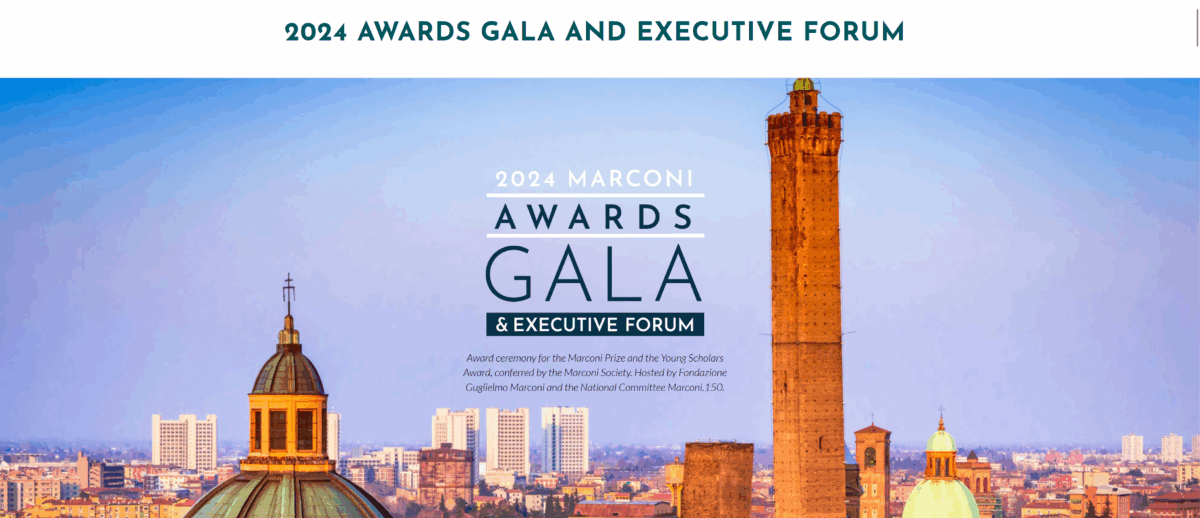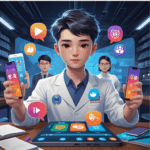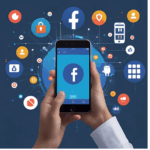“The key to doing good science is to always be outside your comfort zone”

He usually wears T-shirts, but these days he is looking for somewhere to hire a tuxedo. Javier Conde, assistant professor at the Escuela Técnica Superior de Ingenieros de Telecomunicación (ETSIT) at the Universidad Politécnica de Madrid (UPM), needs formal wear for the ceremony at which he will receive an award from The Marconi Society. The award is the Paul Baran Young Scholar Award, which recognises innovative research carried out by young scientists and engineers in the field of information and communications technology. Together with three other winners of the same award from American universities, he will collect the prize on 26 October in Bologna (Italy), the birthplace of Guglielmo Marconi. This is the first time that the international organisation, founded 50 years ago on the centenary of the birth of the pioneer of wireless communications, has awarded a prize to a Spaniard. The recognition comes for his work with digital twins. Conde, 27, is clear about the key to advancing science: staying ‘out of your comfort zone’.
The Marconi Society Award is perhaps the highest honour a young telecommunications engineer can receive. Does being the first Spaniard to win it make the honour even more special?
Without a doubt. Representing Spain in such an important award makes it very special. But it is also a responsibility. And at the same time, it can serve as inspiration for future generations to see that someone as ordinary as me can aspire to compete with candidates from the best universities in the United States. That makes it especially important for me and for the entire Spanish scientific community.

The jury highlighted his research work in the field of digital twins. What are they?
The term has been greatly misused in some fields. I like to define a digital twin in a very simple way: it is a virtual equivalent of a product or physical entity; but, although people often stop there, what really sets a digital twin apart from other types of simulations is that there is a two-way exchange of information between the physical identity and the virtual environment. To clarify: you can have something as simple as a valve (or something as complex as an aeroplane) and its digital twin. The valve can tell the virtual entity what state it is currently in, and in that virtual entity you can perform very complex processing (including artificial intelligence, big data) and predict, through the physical definition of how a valve behaves, its future state or what happens if I subject it to certain conditions. With that knowledge, which you generate from the real-time information you have about the physical valve, you don’t stop there, but you can close the loop and transmit commands to that valve. ‘Hey, if you keep going like this, you’re going to blow up! Lower your pressure a little.’ That’s how you get feedback, which is what makes digital twins really powerful.
What other applications do they have?
They are very varied. For example, to design products. You can obtain information from the physical world and design a product in the virtual world to see what its impact would be. Specifically, I have created digital twins of very different kinds: one of an airport in Aberdeen, Scotland, and another of a low-emission zone in Guadalajara. They are two completely different fields, but they have used the strength of digital twins to process all the available information. We live in a world of data today—lots of sensors, lots of IoT [Internet of Things]—and we can transfer all that data to the virtual entity to perform whatever processing we want there. It’s about applying everything we teach at our school about data engineering and telecommunications engineering to a specific case with the aim of improving it in any way possible.
His work in this field focuses on ensuring scalability, interoperability, and information security for digital twin systems.
These three pillars are fundamental to a digital twin. Interoperability is necessary; without it, there could be no communication between different digital twins, it would be as if they were speaking different languages. That is a very important aspect. Another is scalability because, if we want to model an aeroplane, or anything that requires a lot of information, we will have to design technology that can support the processing of large amounts of data, so that all the capabilities of big data, all the advances of recent years, must be incorporated into the digital twin. The same applies to security. Imagine how important an aeroplane or an airport is, because all communication from that physical entity to the virtual entity has to be secure. Any leakage or manipulation of information within the virtual entity and the sending of erroneous commands to the physical entity would be a very serious problem.
Within the research group he belongs to, Next Generation Internet, he also addresses other issues.
The truth is that the name of the group is quite eloquent; it never goes out of fashion because there is always a new generation. There we develop many different lines of research, such as open data, which I also applied to digital twins. Part of the information from a digital twin can be published openly and used by others. For this, there are a series of metrics that tell you how good your data is, how interoperable it is. I also do a loT of research in Artificial Intelligence (AI). Where did this come from? Well, within the digital twin, part of the processing may involve the introduction of an artificial intelligence module to enhance its capabilities. Since the boom in generative AI a couple of years ago, another part of my research has been devoted to injecting errors into models to see what happens if, for example, a bit changes, what impact this may have on the outputs. And also to the evaluation of models, something very relevant to society but also to engineering. Because the best model is not always the most suitable if, for example, it costs a lot of money or consumes a lot of energy; sometimes it may be better to use another one that is slightly worse if its energy consumption is much lower.
How do you rate the research and innovation ecosystem encompassed by the UPM?
I am a 100% UPM and ETSIT product, as I studied my bachelor’s degree, master’s degree and doctorate here, although I have collaborated and worked at other institutions. With all this in mind, I can say that I believe the UPM and ETSIT are ideal places to develop an academic career. In terms of facilities, we have a wealth of resources at our disposal. Nowadays, especially in my field, when you talk to colleagues, they always ask you how many GPUs [graphics processing units] you have. Well, right here at the IPTC [UPM’s R&D&I Centre for Information Processing and Telecommunications], a great deal of effort has been made to set up a good infrastructure, with a very powerful data centre. In other words, at the technological level, you have access, because, unfortunately, if you don’t have the necessary resources, you can’t do quality science, because you can’t test things. And the ETSIT provides those resources. On the other hand, the working environment, with colleagues both in my group and in others, is wonderful because they are people who are not complacent. And I believe that the key to doing good science is to always be outside your comfort zone. I’ve been to other places where I’ve seen that people sometimes move much more slowly. They’re in their comfort zone and you can’t move them from there. But here we get ourselves into all sorts of trouble, and that’s the best thing, because otherwise you stagnate, and science is the opposite of that.
Marconi Society post on LinkedIn: https://www.linkedin.com/posts/marconi-society_marconiawards-innovation-techforgood-activity-7259793944966778880-GngC?utm_source=share&utm_medium=member_desktop&rcm=ACoAACwVw88BNa9NIaZQ6oa1ipyD-PefMA2C8iY
Source: UPM, Press room, Research news: https://short.upm.es/560c2, published in its original source on 14 October 2024
Share this:
Latest news



Categories

